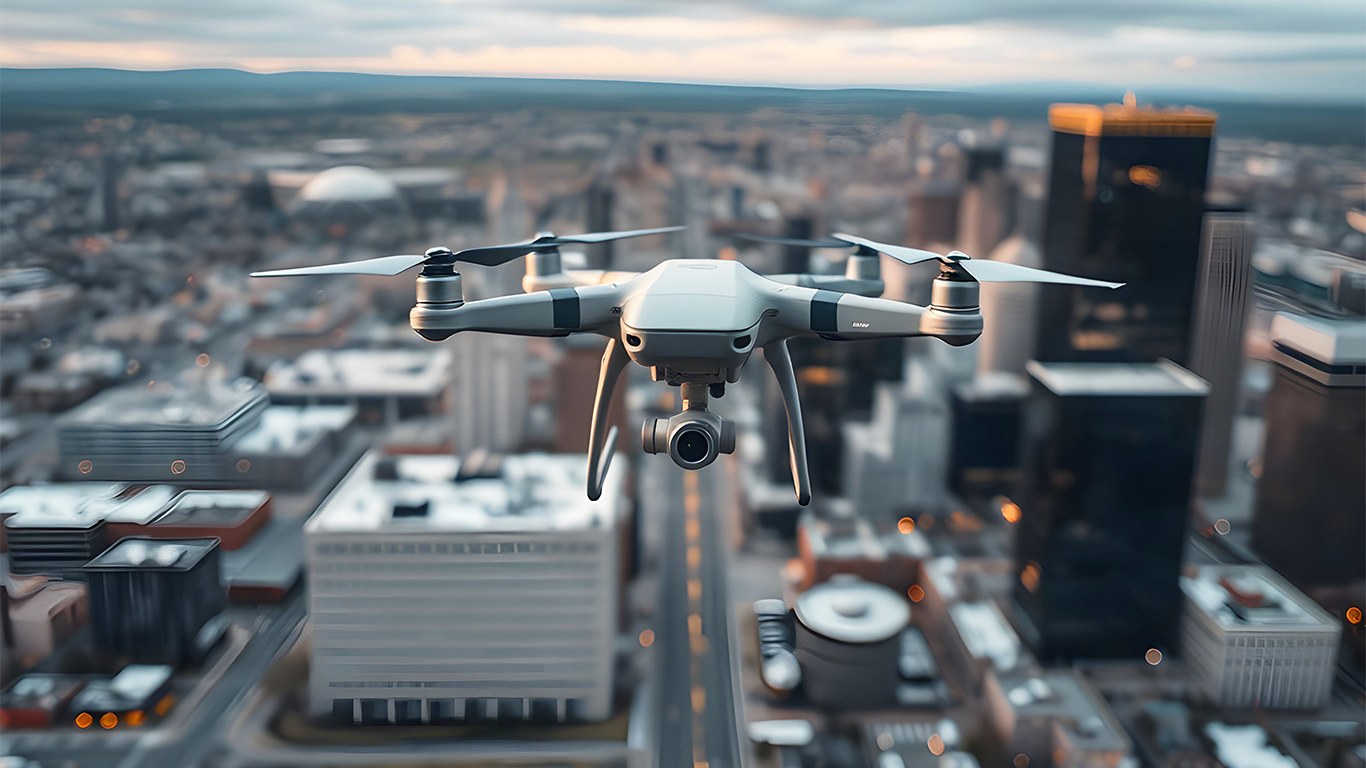Did you know the Apollo spacecraft traveled approximately 240,000 miles to reach the moon? Or that the longest current nonstop flight from Singapore to New York City covers 9,537 miles (in about 19 hours). Aerospace and transportation has come a long way, demonstrating impressive distance achievements and capabilities. For its part, Greater Phoenix has also rapidly evolved and contributed to fostering aerospace and defense, electric vehicle (EV) progress and advanced air mobility (AAM).
MORE NEWS: How semiconductor industry is poised to power Arizona economy in 2025
AAM takes flight
An area that the Greater Phoenix Economic Council (GPEC) and local transportation sector have locked eyes on is the growing presence of AAM throughout the Valley. Federal Aviation Administration (FAA) collaboration with state and local authorities has helped identify the infrastructure needed to expand AAM and promote positive economic results, according to Alton Aviation Consultancy.
Overall, many people consider advanced air mobility — innovative air transportation systems that integrate new aviation technologies, such as electric vertical takeoff and landing (eVTOL) aircraft — as a relatively young market. While this is true in comparison to other aviation technologies, Phoenix Metro is primed for this next phase of development.
“Aerospace is in our region’s DNA and has long been a part of our economic development story,” says Lori Collins, director of business and economic development for Phoenix-Mesa Gateway Airport Authority.
Collins adds that the unparalleled concentration of educational institutions throughout Arizona has only bolstered readiness for aviation advancement, including University of North Dakota (UND) Aerospace and Airline Transport Professionals (ATP) flight schools, Arizona State University’s (ASU) Polytechnic’s advanced manufacturing programs, Chandler-Gilbert Community College’s Unmanned Aerial Systems (UAS), artificial intelligence (AI) or composites programs or high school level career and technical education schools like East Valley Institute of Technology (EVIT) and American Leadership Academy (ALA) Applied Technology High School.
Aviation and aerospace organizations are also fueling the advancement of AAM.
Laying the groundwork
“We established a dedicated business unit in 2020 to support this new market,” says David Shilliday, vice president and general manager of Honeywell UAM/UAS, “as we believed it would require a different pace of innovation and execution.”
Honeywell’s century of aerospace pedigree, combined with adopting precursor AAM elements such as advanced cooling systems, flight controls and electromechanical actuation are now finding their way into the next business jet and defense platforms.
“Our business unit also leads efforts to educate regulators and lawmakers, both federal, state and local, on the benefits of this new market and policies that can help ensure U.S. leadership now and for years to come,” Shilliday explains.
Aerospace heavy-hitter Boeing has also laid AAM groundwork as one of the longest-standing companies in Greater Phoenix.
“Boeing has been developing, manufacturing and testing aircraft in Arizona for over 42 years,” says Mark Gaspers, director of government operations for Boeing’s Arizona Central Region. “Arizona has been supportive of aerospace for decades by focusing on a favorable business climate, partnering on workforce training and protecting assets critical to aerospace testing.”
A key caveat to the adoption of AAM infrastructure throughout Metro Phoenix (and beyond), has much to do with the clear benefits of its technology.
“We’re really trying to get the storytelling part of that out and how it’s going to benefit the communities — and it does benefit different communities in different ways,” says Toni Drummond, founder and president of Future Flight Global.
AAM as a problem-solver
Newer to the Phoenix area, Drummond was excited about the strength of not only the region’s aerospace and aviation, but also its deeply ingrained technology sector.
“I’ve only been here about four years and one of the first things I picked up on was, ‘Wow, they’re really open to next technologies — electric and autonomous,” she says. “When I was taking my son to hockey, I saw my very first Waymo in 2020 and I said, ‘Oh my God, they’re open to this here.’”
This inspired Drummond to establish Future Flight Global’s presence in Greater Phoenix, specializing in advanced air mobility (AAM) solutions. The company’s portfolio includes electric vertical take-off and landing (eVTOL) aircraft, unmanned aerial systems (UAS) and related infrastructure such as vertiports and air traffic management systems.
Wisk Aero, a leading innovator in advanced air mobility has also found a home in Phoenix Metro, working on development of all-electric, autonomous air taxis. The company’s recent partnership with Boeing reinforces a shared commitment to advancing electric aviation and improving air traffic processes.
“Boeing and Wisk are proud to advance the development of safe, everyday flight for everyone through the certification and commercialization of Wisk’s autonomous, passenger-carrying air taxi for the advanced air mobility market,” Gaspers says.
Future Flight Global’s aviation capabilities are a prime example of AAM’s potential to help loosen congested roadways and open the door to countless tourism possibilities. But that’s not all.
“The flight deck of the future will be much more intuitive and will free up the pilot to focus on critical tasks which will improve safety and reliability,” Shilliday says, “and drive efficiency in providing input to the pilot on the shortest routes, best paths to avoid traffic near airports and other options to reduce delays.”
All eyes and eVTOL’s on the horizon
There is work yet to be done, and yes there are challenges in AAM next steps, but overall stakeholders are ready to tackle what’s ahead.
Regulatory challenges, infrastructure and public adoption are some of the obstacles for which the AAM sector must continue to contend, Shilliday notes.
“We have seen good progress on the regulatory front with the release of the Special Federal Aviation Regulation (SFAR) last month which is the FAA’s 880 pages of guidance on requirements for operating these new aircraft,” he says. “While most people wouldn’t think of a new regulation as good news — this one will provide certainty to innovators and potentially unlock some applications here in the U.S.”
Adds Collins, “Rulemaking rarely keeps pace with innovation. In the case of AAM, we have been tracking FAA guidance and applaud their implementation plan ‘Innovate28.’”
Continuing to educate the public of AAM’s value is another priority in progressing AAM.
“Our communities need to understand [AAM] and its benefits so they can be invested,” Drummond says. “Not only that, but we also need to build our ecosystems to support this. We have so many education systems to tap into. There are lots of positives that will come from these investments.”
In closing, Gaspers adds, “Industry, regulators and communities must work together to build a comprehensive ecosystem that prioritizes the safety, reliability and environmental impact of the AAM ecosystem. Arizona could have a great role to play in the future of autonomous AAM.”




